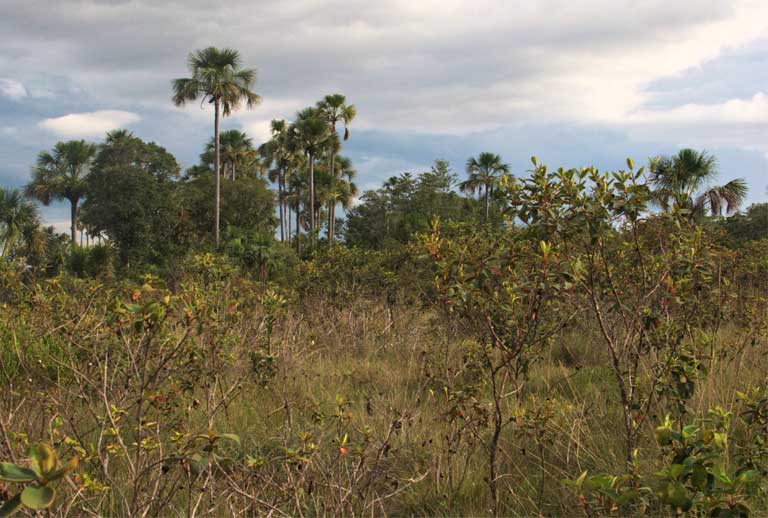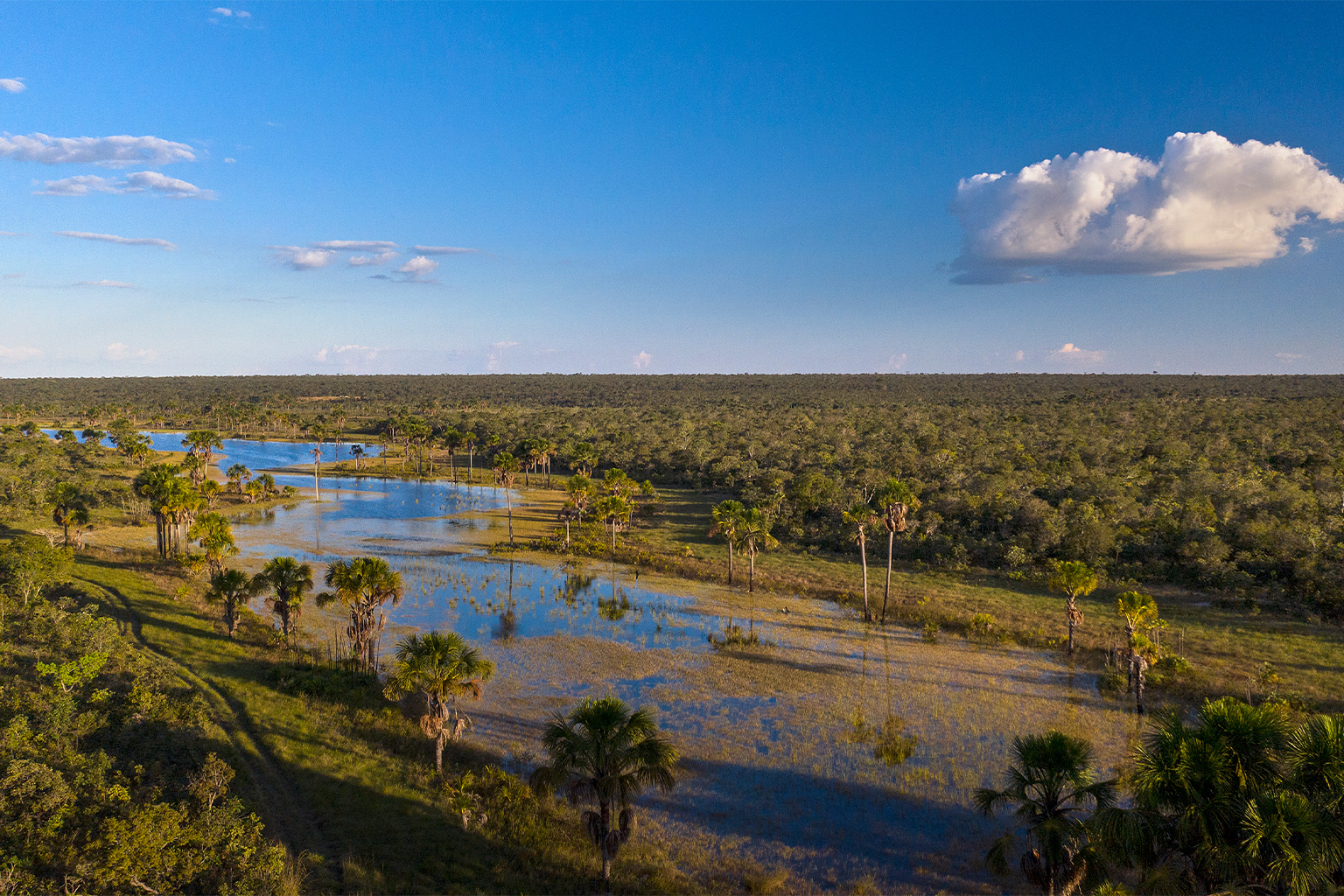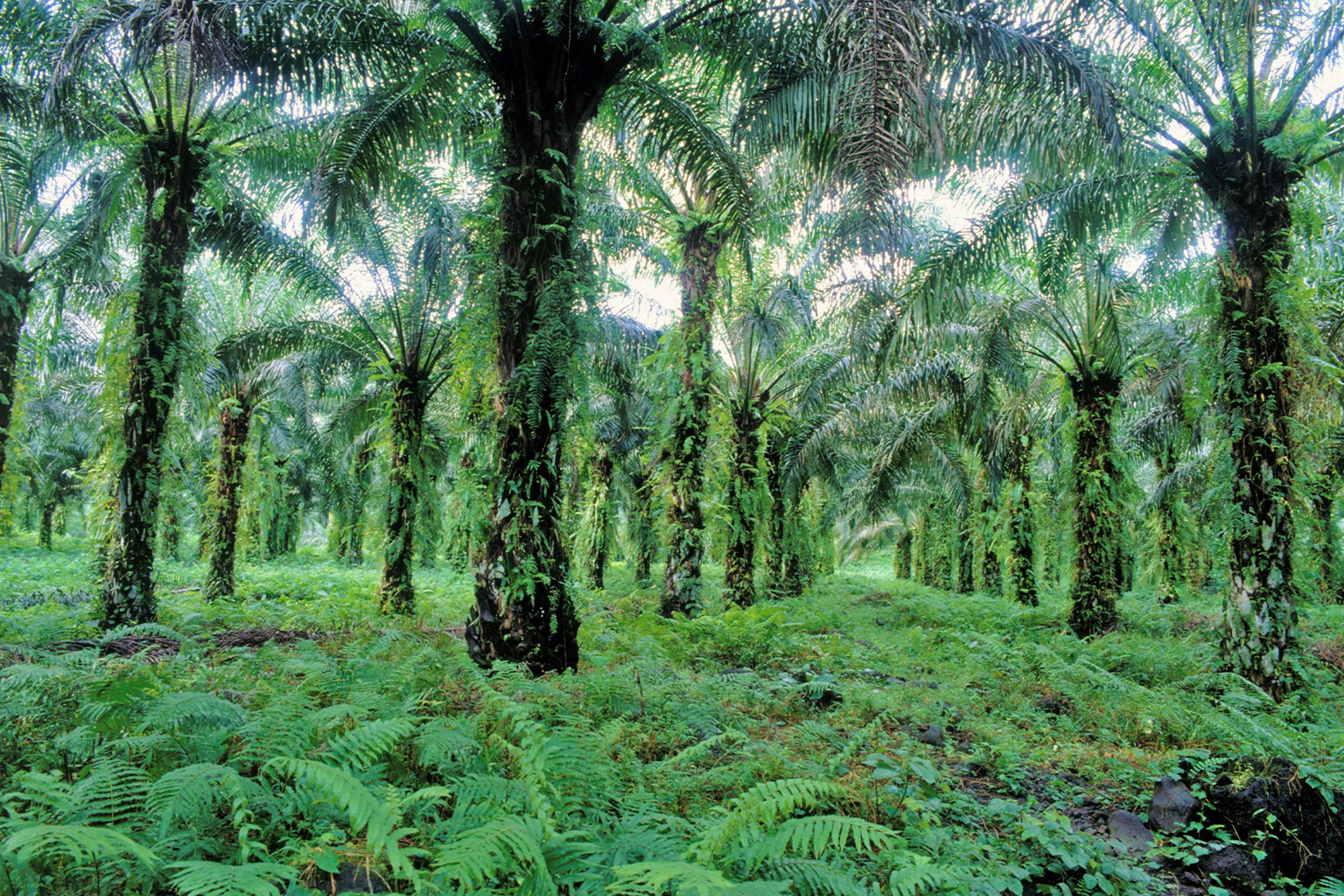- Zero-deforestation commitments (ZDCs) made by the palm oil industry and adopted by producers of other crops as well focus on preserving rainforests, while leaving other biomes unprotected.
- New research by the University of York shows that even if current ZDCs are fully met, around 167 million hectares of mostly tropical grassy and dry forest would remain open for agricultural expansion.
- Often confused with degraded areas that emerge after clearing the rainforest, those biomes are actually rich and biodiverse and also play a role in storing and capturing carbon.
- New EU legislation approved in December adds extra protection for rainforests, but could push even more agricultural production to other biomes, most of them in Africa and Latin America.
Current zero-deforestation commitments (ZDCs) may have the unintended consequence of pushing agriculture to other biodiversity-rich biomes, a new study led by the University of York shows. Published in Nature Ecology & Evolution in late November, the research funded by Unilever demonstrates how habitats in tropical grassy and dry forests remain open for expanding agricultural production, threatening ecosystems often overlooked in Latin America and Africa.
“Zero-deforestation commitments have been designed to do exactly what they say: to protect tropical rainforest from being destroyed for agriculture or other intensive land-uses. This is a reasonable concern — tropical rainforests are generally extremely biodiverse and are crucial for mitigating climate change, by storing and sequestering carbon,” says Susannah Fleiss, the lead author of the study. “However, other habitats support unique biodiversity, and this shouldn’t be destroyed in an effort to protect rainforest.”

The research focuses on palm oil production, although the criteria for defining ZDCs are consistent across different crops. According to the study’s estimations, globally there are 1.2 billion hectares (2.9 billion acres) of noncultivated land with a suitable climate for rainfed oil palm expansion, an area about the size of Brazil and Argentina combined. Currently, only about 27% of oil palm crops in Latin America, and just 9% in Africa, are certified for meeting the Roundtable on Sustainable Palm Oil’s (RSPO) definition of “zero deforestation,” according to the organization’s 2022 Impact Report. Even if future expansion were to fully meet that definition, there would be around 167 million hectares (412.7 million acres) still suitable for production, an area nearly twice the size of Venezuela — around 57% of which is made up by grasslands and dry forests in both Latin America and Africa. Despite a potentially lower crop yield in these areas, irrigation could be used to make them more economically attractive for eventual expansion.
Many palm oil companies have joined the RSPO commitments since 2018, after years of public pressure regarding the impact of the industry over rainforests and their biodiversity. It is now clear that this supposedly “sustainable” development is starting to affect other areas, the researchers argue. “The first RSPO certified plantation in Africa was in [the] savanna in Gabon,” reminds Fleiss, adding that there is more potential for “zero-deforestation” expansion in Latin American biomes than in African ones. Latin America has around 60 million hectares (148 million acres) of grasslands and dry forests at risk.

“Both continents will face a number of specific challenges: using knowledge of local habitats to identify areas of high biodiversity, working with oil palm growers to avoid destroying biodiversity and ensuring that all habitats are protected by local and national governance,” Fleiss tells Mongabay. Currently, it is not clear to the researchers where plantations are most likely to expand: The lack of protective legislation could make some countries more interesting to the industry than others, even if some areas seem, at first, naturally more attractive for oil palm crops due to the landscape and water availability.
The eventual expansion in currently unprotected biomes could affect a third of the vertebrates on the IUCN Red List of Threatened Species. The savannas in Congo are home to the giant ground pangolin (Smutsia gigantea), while the Colombian Llanos host Hellmich’s Rocket Frog (Hyloxalus vergeli), only a couple of the species on the list.
“These biomes are also important for carbon sequestration, as they can have high below-ground carbon stocks, in plant roots and soil, but this is also often overlooked,” says Fleiss. Even though the implications for greenhouse gas emissions seem evident, the researchers point out that it remains difficult to quantify the real impact of clearing these areas, as the existing data suggest that below-ground carbon stocks are “highly variable” — but could, in some cases, “exceed those of moist forest,” the paper highlights.
Understanding grassy ecosystems
While the research focuses mainly on the commitments made by the palm oil industry and its shortcomings, the focus on preserving solely rainforests is widespread among food firms. One of the reasons is the common misconception that ancient grassy habitats are actually “degraded” areas of rainforest. “When tropical rainforest is cleared, the habitat that reforms is usually grassy, with some shrubs. This is very low in biodiversity, but superficially appears similar to ancient, biodiverse grassland and savanna habitats, such as the Cerrado in Brazil or Congolian savannas in West Africa,” Fleiss says.

The Brazilian Cerrado has become the go-to example of a biodiversity hotspot that remains largely unprotected by current ZDCs and other agricultural commitments, with a strong lobby by the industry — in this case, mostly connected to soy, corn and cattle production — to maintain the status quo. During the Climate Change Conference in Egypt (COP27), in November, the main argument to avoid further regulation was economic. Wei Peng, the global head of sustainability for grains and oilseeds at the Louis Dreyfuss Company (LDC), urged against the adoption of new directives to protect other biomes, pointing to “potential disruption of supply chains after the implementation of the law.”
WWF criticizes the “roadmap” agreed to by major agricultural companies at COP27, precisely for ignoring large biomes that do not fit the current definitions for preservation. “This roadmap so narrowly defines what types of places will be protected that 74 percent of Brazil’s Cerrado — the world’s most biodiverse savanna that stores almost 14 billion metric tons of carbon — is excluded and therefore vulnerable to irreversible destruction,” WWF says in a statement.

“If they don’t include every ecosystem, these commitments will not work out. Not only does the legislation become more limited, but one can even see things going in the opposite direction than intended. It’s almost like there is an incentive for destruction, an encouragement to take over those biomes,” argues Frederico Machado, a public policies specialist at WWF-Brazil. “We needed a more ambitious commitment to eliminate from the agricultural supply chains all forms of conversion of natural habitats. We had high expectations, but the roadmap still contains huge gaps and has a chance to become a new form of greenwashing for the industry.”
In Africa, the level of protection of different habitats varies largely from country to country. Oil palm plantations, for instance, have driven much less deforestation there than in Southeast Asia, Fleiss says. She argues, however, that with current ZDCs there could be a “high risk” from new plantations. While not causing the same deforestation traditionally seen before the commitments, future expansion could do similar damage in grasslands and other biomes usually ignored by the industry in protection talks.
Ahead of the last Conference on Biological Diversity (COP15), which happened in Montreal in the first half of December, the African Wildlife Foundation (AWF) issued a statement asking for the adoption of strong requirements for “governments to develop regulatory frameworks and guidelines for businesses to report on their impact on biodiversity and minimize any adverse impacts of their activities.” According to the AWF, keeping business accountable should go hand in hand with protecting the right to sustainably use natural resources within the continent, since “many African communities rely directly on natural resources for food, medicine, economic activities, and other immediate needs.”

In the specific case of grasslands, some specialists make the case that full conservation efforts need to get even more attention, for restoration is not as effective for recovering the original biodiversity. “We advocate conserving intact grassland ecosystems as the key strategy for protecting grassland biodiversity, including small patches with disproportionately high biodiversity conservation value,” says Clinton Carbutt, a plant scientist at the University of KwaZulu-Natal in South Africa, in a recent interview with the local agricultural news website Food For Mzansi. In South Africa, where pressures on the biome come mainly from livestock grazing, estimations say that only 2% of grasslands are currently protected.
New EU legislation falls short of protecting other biomes
Recently, there was also hope that new European Union legislation aiming to ban the import of commodities connected to deforestation could also include other wooded lands, a Food and Agriculture Organization (FAO) definition that includes most areas of savannas and dry forests. The text approved by the EU on Dec. 6, however, keeps the focus just on rainforests. The proposal still needs to be ratified by all 27 countries of the bloc. If approved, food firms that export beef, wood, palm oil, soybeans, coffee and cocoa will have to prove, through remote tracking and geolocation, that the commodities do not come from deforested areas. The EU signals that the noninclusion of other biomes can be reviewed within a year of the law’s adoption.

While unable to meet expectations, the EU proposal is already seen as a historic victory for the preservation of forests, says the NGO Observatório do Clima, the main Brazilian civil society network on the climate agenda, with 77 member organizations. The noninclusion of other wooded lands, however, could make the European bloc buy commodities produced in grassy areas that remain unprotected, notices Machado. “Europe will be buying soybeans from the biggest contributor of greenhouse emissions in Brazilian agriculture,” warns the WWF-Brazil specialist.
Presently, to comply with zero-deforestation commitments in the palm oil industry and also for other commodities, one must usually go through the so-called High Conservation Value-High Carbon Stock Approach (HCV-HCSA), which helps to decide where plantations can be created and where forests should be conserved. “Currently, however, this framework has very little detail on grassy biomes, and doesn’t include dry forests,” says Fleiss.
To change that, the study urges, there need to be new comprehensive definitions of other habitats that remain unprotected, with a set of indicators decided by a panel of experts. “This would require expertise on different ecosystems across the tropics, so it would be a large effort to coordinate, but that expertise does exist in most cases, so it should be possible,” says Fleiss.
Citation:
Fleiss, S., Parr, C.L., Platts, P.J. et al. (2022). Implications of zero-deforestation palm oil for tropical grassy and dry forest biodiversity. Nature Ecology and Evolution (online). doi:10.1038/s41559-022-01941-6
Banner image: The replacement of forest by pasture is one of the main causes of deforestation in the Amazon biome. There is a lack of control in the supply chain to ensure that deforestation is not associated with meat production. Image by Marcio Isensee e Sá.
